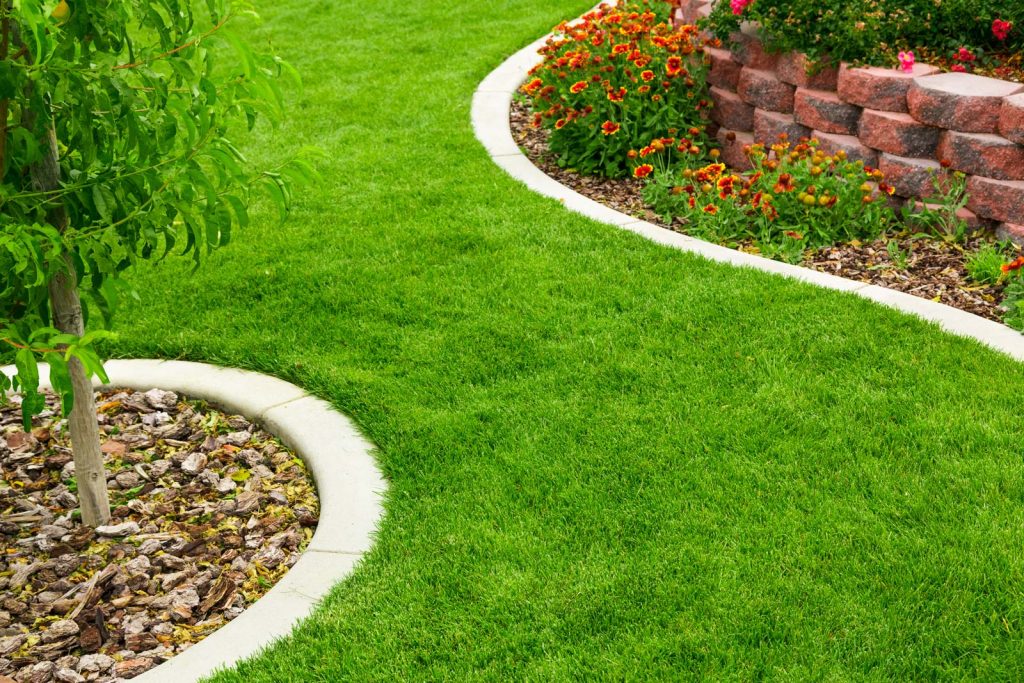Prevent & Control Fungus in Landscapes

Warm Wet Weather
Warm, wet weather brings on fungus…and we get our share of this kind of weather, which means our landscape plants and lawns often have fungus issues. Let’s take about landscape plants first! So what does a fungus look like? Usually, the symptoms of fungus are easily identifiable…round black spots, irregular brown spots or a downy, white dusting on leaves. Some of our most beloved landscape plants are susceptible to fungus including Indian Hawthorn, Roses, Lilacs, Hydrangeas, Columbine and Dogwood trees to name a few. While some plants are more susceptible, keep in mind that pretty much any plant could get a fungus if the conditions are conducive and the fungus spores are present. However, there are some things we can do to help avoid fungus infections.
Good Air Flow
Space plants based on mature size. Properly spaced plants have more air flow between them, which keeps foliage drier both after a rain and after irrigation applications. For example, KnockOut Roses can grow to at least four foot tall. Ideally, they would be spaced about five feet apart, from center to center, at planting. We understand the temptation to plant closer together when the new, young plants are small, but the extra maintenance involved with pruning and harder control disease outbreaks just aren’t worth it!
Proper Watering Timing
We mentioned irrigation above; the amount of water is less important than when you water, at least when trying to avoid fungus issues. Watering early in the morning is ideal so that the foliage can dry fast as the sun and wind pick up for the day. Conversely, watering in the evening provides the perfect circumstance for fungal growth…hours of water sitting on foliage in a dark environment. Bottom line, water in the early morning and space your plants out properly.
Prevention and Control of Fungus in Landscape Plants
That covers all that we can control; the environment and weather have big roles too. Obviously, in an area with warm, humid spring and fall seasons, no matter how carefully you have taken care of your plants, fungus is unavoidable. Once a plant is infected, the best solution is to treat it with a systemic fungicide such as Ferti-Lome Liquid Systemic Fungicide. For roses, there is also a product from Bayer called All in One Rose & Flower Care that includes a fungicide as well as a fertilizer and insect control product; this works well as a preventative treatment.
Apply fungicide sprays when the foliage is completely dry and will remain dry for about 24 hours; this will allow it to be fully absorbed. Take note of how long the products treats for; additional sprays might be necessary during prolonged wet spells and while conditions are good for fungal growth. The systemic fungicide will be absorbed and distributed throughout the plant, protecting new leaves from being infected and kill spores present on leaves which will reduce spreading. Non-systemic fungicides such as Bonide’s Copper Fungicide will kill active fungus spores already on leaves and is good for edibles.
Keep in mind that the treatment process can take several applications and infected leaves will most likely turn yellow and fall off. Be sure to remove and dispose of infected leaves to help reduce spread of fungus. Plants that are susceptible to fungus can be sprayed at a preventative rate; read labels carefully, the rate for preventative sprays is different than the curative rate.
Prevention and Control of Fungus in Lawns
Now on to the lawn! Lawn fungus symptoms include large circular or slightly irregular, thinning, brown spots that grow in size each year. As with landscape plants, there are some control measures we can put in place before the occurrence of fungus to help reduce the chances of infection and impact the recovery time. Fertilize with slow release fertilizer instead of a fast release, high Nitrogen fertilizer. Water lawns deeply, less frequently, as opposed to more frequent, shallow waterings. This will encourage better root growth. Provide good drainage, both on the surface and subsurface of the lawn areas. Good drainage insures that water can quickly move out of lawn areas. As we talked about above, clearly we aren’t in control of the rain and temperatures. However, we can control the fertilization and water we apply, as well as address drainage.
Once symptoms of fungus are visible, treat as soon as possible with Bonide Infuse Systemic Disease Control or Ferti-Lome F-Stop granules or Ferti-Lome Liquid Systemic Fungicide, available as a liquid spray. Treat the entire lawn area to help control spread. This will need to be done while conditions for fungal growth are present and for the next few years as well. Preventative applications on lawns before the wet, warm season are helpful. Apply in March at preventative rates as the warm season grasses start greening up.
For plant materials that are too large to spray, keep in mind that most foliar fungus diseases on trees and shrubs will cease being active when we reach temperatures consistently above 90 degrees. For large healthy plants, the issue will more of an aesthetic one than one that could cause plant death. The same is true for shrubs like hydrangeas; it’s more unsightly than dangerous but if let go too long for too many years, it could cause a decline of plant health.